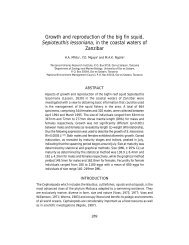gpa_east_africa_case.. - GRID Africa GeoPortal - UNEP
gpa_east_africa_case.. - GRID Africa GeoPortal - UNEP
gpa_east_africa_case.. - GRID Africa GeoPortal - UNEP
Create successful ePaper yourself
Turn your PDF publications into a flip-book with our unique Google optimized e-Paper software.
provide the opportunity for evaluation and decision-making in light of the conclusions reachedfrom this Study and further as they become available. For this purpose reasonableassumptions are made, to set up the analytical framework, produce an approximate costestimate and show how a Cost Benefit approach may be applied to identify problems, clarifydecision-making issues and support capacity-building actions.In the first instance, a cost estimate may be based partly on relevant indicators and partly onthe estimated cost for the Mombasa District Sewerage Project (see Mombasa Cost BenefitAnalysis). The Mombasa Sewerage Project is estimated at about $100 million for a populationof about 650,000. Applying the DSM and Mombasa population ratio as an indicator forestimating the cost of the DSM Project, resulting ratio is 5.38 (3,500,000 / 650,000). On thisbasis the cost for DSM may be estimated in the region of $500 million. This seems a crudeestimate as well as problematic in terms of affordability.Further refinement should be attempted. A particularly useful information is the fact that 70%of the population of DSM region (2,450,000) live in sparse unplanned settlements located inthe peri-urban areas and the remaining 30% (1,050,000) in the city of DSM. Applying the costindicators referring to technical options identified in the GPA Draft Recommendations forDecision Making on Sewage, also used for the Mombasa Study, the cost may be estimatedat $222 million, $210 million for the city of DSM and $12 million for the peri-urbansettlements, as shown below as Option 2.Table 7: Technical Options and Estimated Capital Cost of Wastewater ManagementOption 1.All population served by off-sideCostMillionOption 230% of the population served byCostmillioninfrastructure and treatment plants $ off-side infrastructure and $treatment plants and 70% by onsitedisposal options3,500,000 x 200 per person 700.0 1,050,000 x $200 per person2,450,000 x $5 per person210.012.25Total 700.0 Total 222.25Note: Cost indicators based on Table 1.1 "Cost Range per capita for On-Site and SeweredOptions", GPA Draft Recommendations Report, 2000If the annual operating cost is estimated at 5% of the capital cost, the annual operating costswill be $10.5 million and $0.6 million respectively, totalling just over $11 million a year.4. Cost - Benefit Valuation ApproachThe first step in the development of Cost-Benefit Analysis is to define the valuation methodsand indicators applied to guide the estimation of quantitative and qualitative impacts (costsand benefits) resulting from environmental changes. Those changes accumulated underpresent wastewater conditions (that is, the costs of degradation) and those changespredicted to occur as a result of the improvements associated with the provision ofsewerage (that is, the benefits of actions).There are three main categories of value relative to which costs and benefits are estimated:Direct use value, indirect use value and non-use (existence) value. Costs are associated withreduction of the use and non-use value of the environment, while benefits accrue from actionsand investment that reduce or eliminate the costs and improve environmental quality. Thevaluation approach helps in establishing the link between information on environmentalchanges/impacts and their socio-economic significance and the estimate of the positive ornegative values of these changes, expressed as costs or benefits.Final Draft Report – Cost Benefit Case StudiesGPA Strategic Action Plan on Sewage, October, 200033



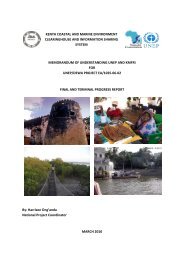
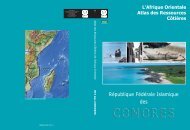
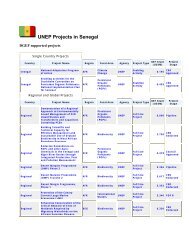

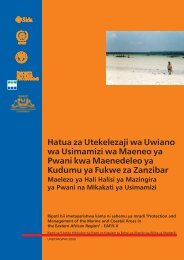
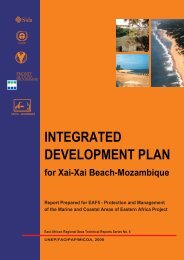
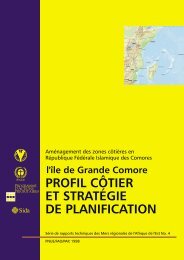
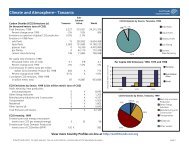

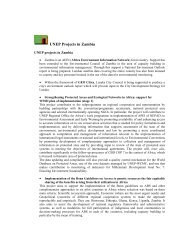
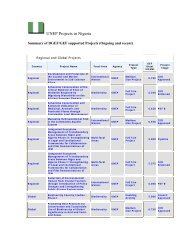
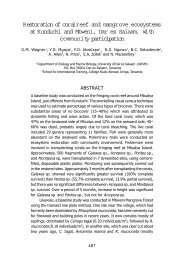
![Please Click to download [English] - GRID Africa GeoPortal - UNEP](https://img.yumpu.com/30633391/1/184x260/please-click-to-download-english-grid-africa-geoportal-unep.jpg?quality=85)
